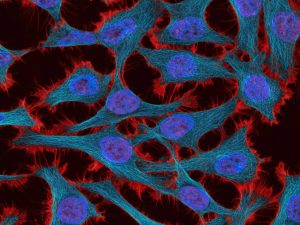It’s official: the human papillomavirus (HPV) vaccine prevents cervical cancer.
The world has known for several years that the HPV vaccine is effective in preventing the occurrence of certain HPV infections, as well as preventing the changes in cells that can precede cervical cancer. But up until recently, the world’s first groups of HPV vaccinated girls had not been old enough to see any impact of the vaccine on the numbers of women developing cervical cancer. As the first vaccinated cohorts are now reaching their late 20s – when the risk of cervical cancer would usually increase – and they are old enough to enter cervical screening programmes, the impact is starting to be recognised at the real-world level. With data now coming in, two recent studies have shown for the first time that the HPV vaccine does, indeed, protect against cervical cancer.
In October 2020, a study from the Karolinska Institutet in Sweden used medical registry data to compare the incidence of cervical cancer in women who had the HPV vaccine when they were girls, against women who didn’t have the vaccine when they were girls. The study found that women who had been vaccinated against HPV have a 47 in 100,000 chance of developing cervical cancer in contrast to women who have not been vaccinated against HPV, who have a 97 in 100,000 chance of developing the disease. They concluded that HPV vaccination almost halves individuals’ chances of developing cervical cancer.
 Whilst this Swedish study looked at data on an individual level, an English study published today in the Lancet has taken a population level approach to this public health issue for the first time. Researchers from King’s College London and Public Health England, funded by Cancer Research UK, found that HPV vaccination has dramatically reduced incidence of cervical cancer across the female population in England who were offered the vaccine at ages 12-13.
Whilst this Swedish study looked at data on an individual level, an English study published today in the Lancet has taken a population level approach to this public health issue for the first time. Researchers from King’s College London and Public Health England, funded by Cancer Research UK, found that HPV vaccination has dramatically reduced incidence of cervical cancer across the female population in England who were offered the vaccine at ages 12-13.